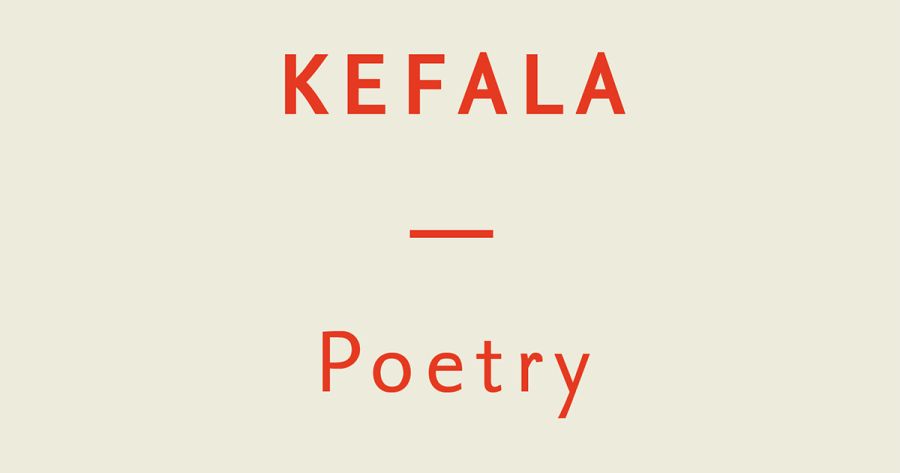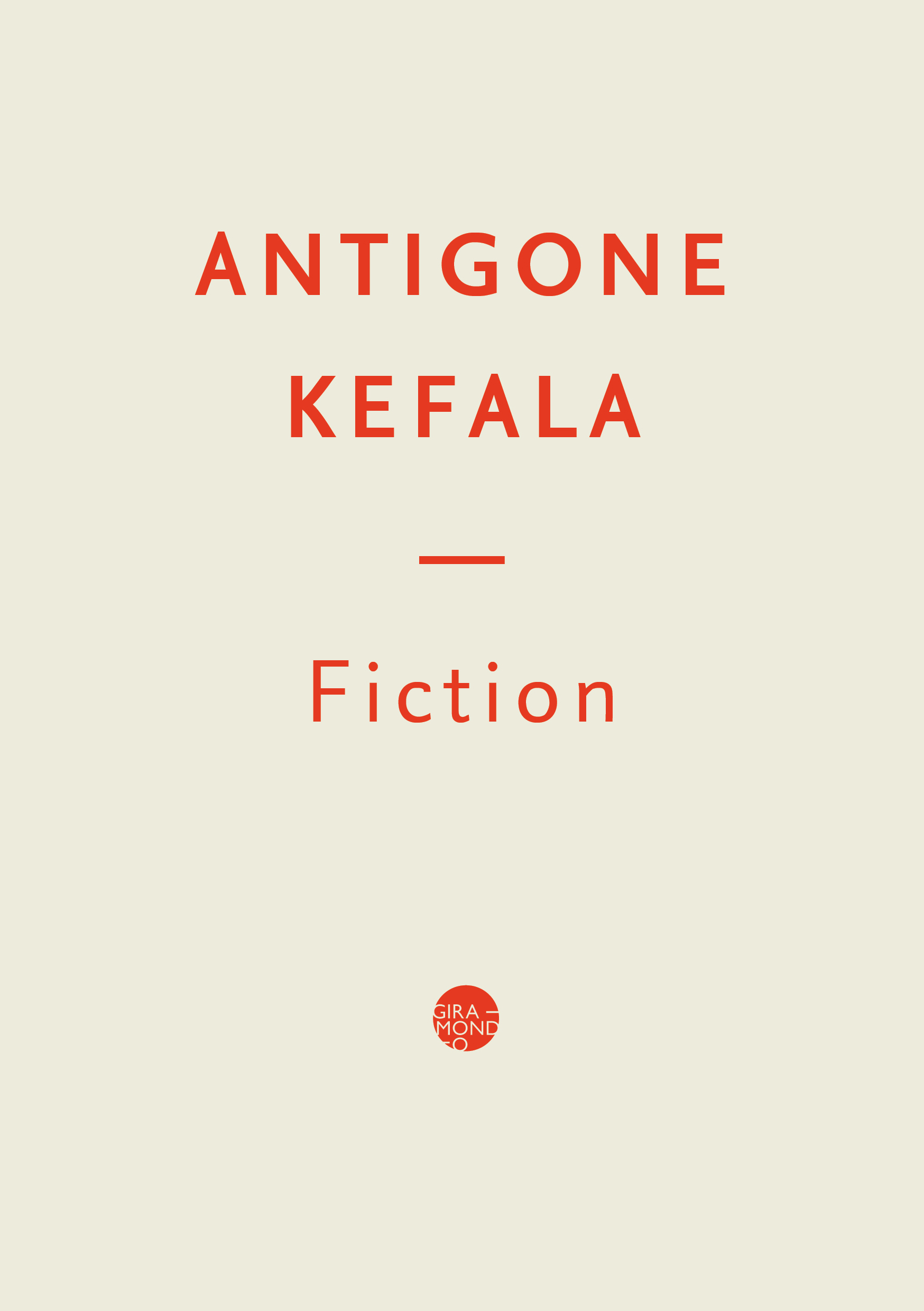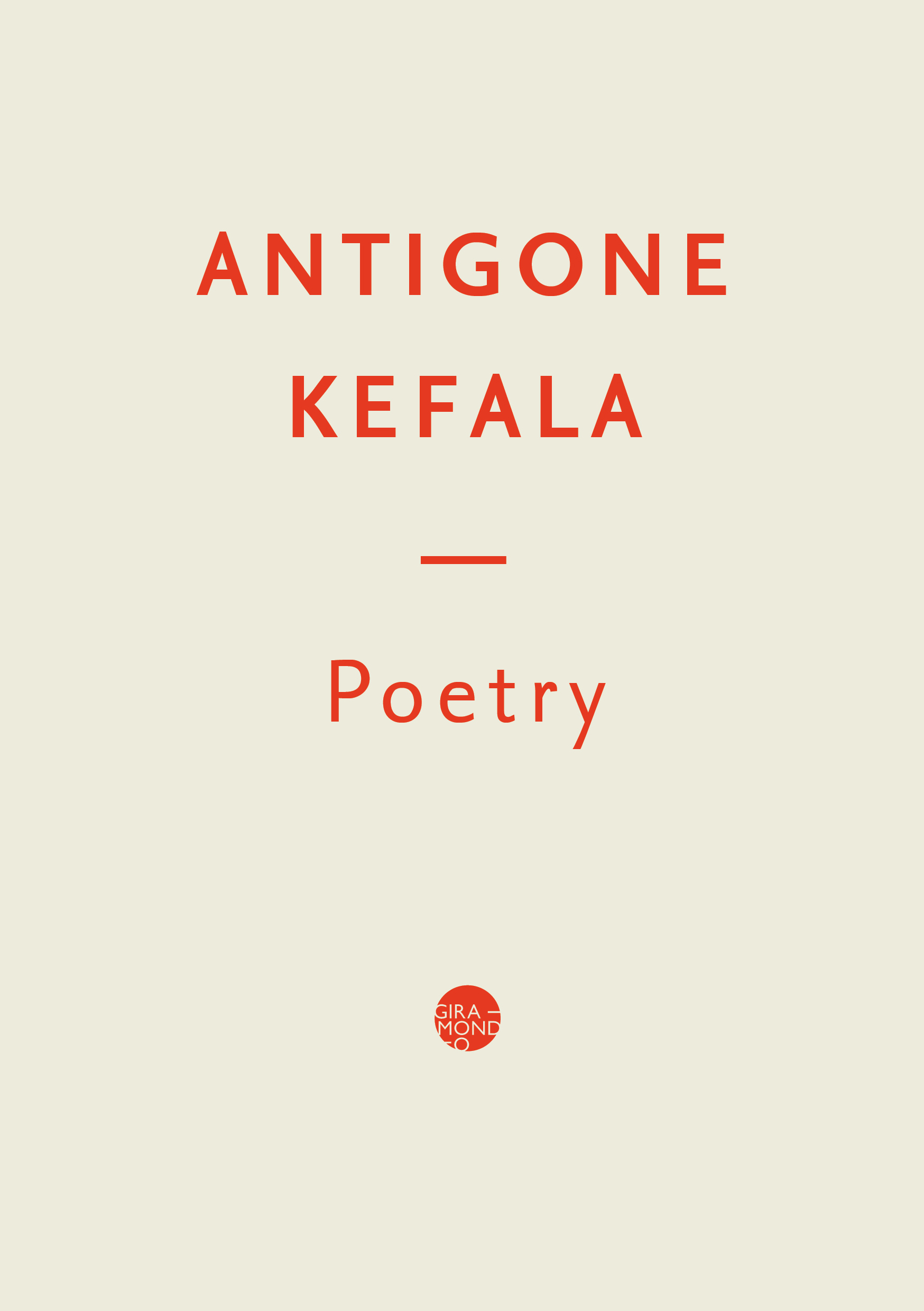
- Free Article: No
- Contents Category: Poetry
- Review Article: Yes
- Article Title: Some undefined peace
- Article Subtitle: Moving beyond ‘migrant writer’
- Online Only: No
- Custom Highlight Text:
For a long time, Antigone Kefala was thought of as a migrant writer. This lens confined discussion of her work to the territory of biography and witness and obscured the migratory poetics of the writing itself. In her spare, bristling poems and candid journals, and across her non-fictional prose and fiction, Kefala’s restive work hinges on precision and vision.
- Book 1 Title: Fiction
- Book 1 Biblio: Giramondo $34.95 pb, 382 pp
- Book 1 Cover Small (400 x 600):

- Book 1 Cover (800 x 1200):

- Book 1 Readings Link: https://www.readings.com.au/product/9781923106277/fiction--antigone-kefala--2025--9781923106277#rac:jokjjzr6ly9m
- Book 2 Title: Poetry
- Book 2 Biblio: Giramondo, $34.95 pb, 384 pp
- Book 2 Cover Small (400 x 600):

- Book 2 Cover (800 x 1200):

- Book 2 Readings Link: https://www.readings.com.au/product/9781923106277/fiction--antigone-kefala--2025--9781923106277#rac:jokjjzr6ly9m
Born in 1931 in Brăila in Romania, Kefala and her family left for Greece after World War II ended, living in refugee camps until New Zealand/Aotearoa accepted them as migrants. Kefala attended school and university there, studying French. She moved to Sydney in 1960 after which her poems began to be published. One early poem was published by novelist and poet Rodney Hall when he was poetry editor for The Australian. Another appeared in Mother I’m Rooted (1975), a feminist anthology edited by the essayist, poet, and novelist Kate Jennings.
Kefala’s first poetry collection, The Alien (1973), was published by Makar Press in its Gargoyle Poets series edited by critic Martin Duwell. In a conversation in 2021 with writer and artist Anna Couani and Vrasidas Karalis, Professor of Modern Greek at the University of Sydney, Kefala commented that Duwell ‘had to fight enormously’ to publish the book ‘because I was totally outside the line of what they were publishing’. The First Journey (1975), a novella, followed. Her last poetry collection, Fragments (2016), was her first to win an award – the Judith Wright Calanthe Award for Poetry in the Queensland Premier’s Awards. She received the Patrick White Award in 2022, days before she died.
Kefala’s writing crosses the borders of form, stepping between narrative and image, realism and surrealism. Some novellas draw from memoir to the extent that they might be read as autofiction, though Kefala wrote them well before French writer Serge Doubrovsky coined that term to describe his novel Fils (1977). Kefala’s poem-like Late Journals (2022) interleave crisp witness with lyrical fragments. Her poems have sharp narrative bones, while her stories drift in and out of dreams.
These two volumes collect Kefala’s published fiction, including six novellas and numerous short stories, and her six poetry collections. Introduced by novelist and critic Mireille Juchau and academic and publisher Ivor Indyk respectively, they assemble work which has been out of print or difficult to find. As an enthusiastic reader of Kefala’s work over decades (introduced to it by Indyk, who taught her work at the University of Sydney, alongside writers like Ania Walwicz and π.o.), I am glad to see it curated with such care.
Yet the volumes’ publication also raises questions of belatedness and hindsight. Why does it take so long for some writers to be read widely? What fashions, lenses, and mechanisms shape attention in a literary culture? These were questions of which Patrick White was mindful when he used the money from his Nobel Prize to fund the Patrick White Award for writers who ‘may not have received due recognition’.
Reading across Kefala’s poetry and fiction reveals patterns of narratives broken by shifting spectres, sharp observations alongside whimsical images, motifs of night, light, water, and loss. Kefala’s minimalist work meticulously assembles fragments in a mode evoking breakage, aftermath, and salvage. Kefala comments that she was always told her work was ‘too small’. Yet her poetry’s lean lines and crisp images accumulate, her fiction’s scenes and vignettes gather, building momentum and meaning.
Indyk describes the way her poetic sequences, especially in her second collection, Thirsty Weather (1978), allow exploration of ‘states of dislocation’. Juchau writes that Kefala’s ‘austere and radiant fiction splinters [the] totalising vision’ that an artist’s experience of exile necessarily ‘forges work of wisdom, ethical purity, special insight’. Breakage – across a poem’s lines or sections, or a story’s pieces – evokes the fragility of observation, memory, and moment.
Kefala’s poems use line movement to twist and reorient images. In ‘Botanical Gardens’, ‘glass butterflies’ flutter their wings ‘along the burning / surface of the waters’. When the line breaks, ‘burning’ stops acting like a noun to become an adjective. In ‘Letter’, one of the spare and achy poems from Absence (1992), the speaker asks: ‘Why have you left me / this unwanted luggage?’ The line break reveals both the state of being burdened with loss and a sense of the abandoned self as ‘unwanted luggage’.
Dreams, too, are freighted with loss. Indyk writes of the ‘strangely ordered realities, signs and shadows’ the poems’ dreams and memories present. They point to ‘what is absent, to abandoned, desolate or haunted places’. For Juchau, whose own writing about dreams is remarkable, Kefala’s dreams deepen ‘the meaning of waking life’.
In dreams the self is disoriented or splintered. The First Journey’s narrator Alexi recalls: ‘In the dream, that night, I was going up a spiral staircase in an empty white house. I was with someone else. I and another I. Sometimes I was I, and sometimes the other person.’ Kefala’s dreamers inhabit uncanny places filled with longing, as in the haunting Conversations with Mother where the speaker writes in truncated notes: ‘Dream last night. I was in a totally white place, fog white. A small bridge over a river that could not be seen.’
In dreams, like hauntings, one thing is inhabited by another, an effect Kefala usually achieves without metaphor. The austerity Juchau highlights involves leaning away from the ostentatiously figurative. Instead, things resembles one another, often barely perceptibly. In The First Journey, the streets in Bucharest are ‘full of snow breaking under our feet like fine splinters of glass’.
And there are splintering moments of perception. Helen, protagonist of the novella Intimacy, sees her blurred face ‘in the grey, smoky film’ of a mirror. She understands the habitual nature of her husband’s gestures, ‘second-hand gestures used out of a lack of involvement’, the same ones he ‘had repeated with other women whose presence you almost felt’. She feels a ‘sickness of longing that fills the world’.
Across Kefala’s poems and fiction, people move through space and place. They are often walkers, especially night walkers. The world at night is another of Kefala’s fascinations. In The First Journey, Alexi watches trees, lamp posts, and wires ‘stretched tight and still in the night’. Poems ends with an image of nightfall, the sky’s soft colours bringing with them ‘subtle loneliness’.
Trains, once sites of struggle and escape, become soothing parts of postwar urban patterns. The ‘regular rhythm of the train advancing in the night’ counterpoints Alexi’s nervy observations. He is agitated by the moral weight of witnessing, a habit the war’s end does not subdue. He dreads danger coming ‘because of a negligence of awareness on my part’.
Kefala’ s characters and speakers cannot forget war. Nor can the devastated cities they inhabit. In The First Journey, houses are ‘dignified skeletons … following each other empty-socketed, watching with invisible eyes abandoned streets, charred trees, craters where bombs had fallen’. Buildings and trees are invested with life. It is humans who invent wars ‘to harass each other’. Yet many long, like Melina in The Boarding House, for peace: ‘this longing, continuous and stubborn for some undefined peace never to be attained’.
The label ‘migrant writer’ served in Australian literary culture to insist on centre and margin, in the way Gayatri Chakravorty Spivak explained, writing about colonialism more broadly: ‘[I]n terms of the hegemonic historical narrative, certain peoples have always been asked to cathect the margins so that others can be defined as central.’ This positioning is doubly bizarre when a majority of Australians are migrants or their descendants, and the work of Aboriginal writers has also long been marginalised.
More recently, as writer and doctor Jumaana Abdu suggests in her essay ‘A Manifesto for the “Diverse Writer”’, ‘a self-perpetuating reward system … snuffs out talent unaligned with pre-imagined narratives, and undermines the legitimacy of marginalised writers awarded for true brilliance’. Perhaps Kefala’s work was neglected because her talent was unaligned with the existing narratives, in its precision and reticence, its dreamy porousness and uncanny atmospheres. When her work was rejected by publishers and editors, she felt ‘they do not accept the medium’.
Yet from the start, Kefala had publishers who championed her work. Giramondo’s sustained support has been crucial in establishing her reputation. Asked by Karalis to define poetry, Kefala uses the word ‘necessity’. Why do we write? Again, it’s a necessity. This two-volume collection feels necessary, too, inviting readers who think beyond restrictive categories to appreciate, as Juchau puts it, the austerity and radiance of Kefala’s work.


Comments powered by CComment